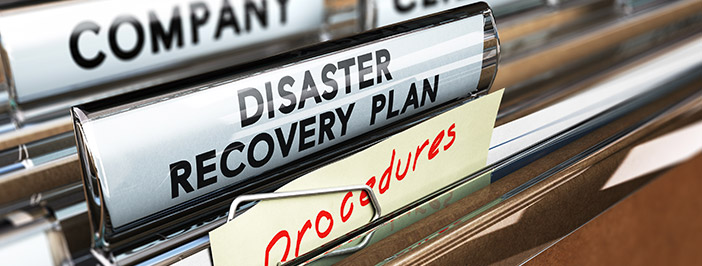Disasters come in many forms. Most of the time for a business, a disaster is the result of a power outage, an act of nature, a cyberattack, or human error. Whatever the cause, without a surefire workplace recovery plan, a business is likely to suffer extreme financial losses.
The following facts are alarming. The good thing is, that if you can acknowledge areas for opportunity in your business, you can greatly minimize the impact of any unfortunate incident.
1. 75% of small businesses have no plan for workplace recovery.
Back in the ‘90s, four seventh grade ruffians decided to climb up the movie theater sign in our hometown and rearrange the letters on the marquee. On the way down, one of the guys, let’s call him Lucky Joe, slipped from the ladder, hung upside down from one of the rungs by his foot as the rest of the quartet fled the scene of the crime, and subsequently dropped twenty feet and landed on his arm.
For the next four hours, Lucky Joe wincingly laughed off his pain and went about attempting to enjoy the rest of the evening with his friends. At just around midnight, his three friends noticed he was getting sweaty and red in the face.
The pain became unbearable and Lucky Joe passed out. His friends had no idea what to do next.
If your business doesn’t have a workplace recovery plan, you might find yourself in the same type of situation as these kids. And you wouldn’t be alone. In a survey by Nationwide, 3 out of 4 small businesses reported that they do not have a disaster plan in place.
If Lucky Joe’s three friends had known better, they would have immediately called 911 when he fell from the movie theater marquee. And another would have been trained in CPR in case Lucky Joe stopped breathing.
In your business, it’s important to plan ahead for potential disasters as well. You do this by meeting with your team and establishing best practices, by ensuring that you have the proper tools and resources to overcome the disaster, and most of all, by minimizing the downtime of your business.
The last thing you want to do in any disaster is ignore the problem. The first thing you want to do is consult your workplace recovery plan.
2. A minute of downtime averages out at a loss of $5,600.
When Joe woke up, he was in a hospital bed. His parents were happy he was in recovery, but greatly disturbed by the ambulance and hospital bills.
If disaster forces your business into downtime, you are in for a huge financial burden. Studies on the subject of downtime vary, but one report by industry leader Gartner reports an average loss of $5,600 per minute, which translates to $336,000 per hour.
An essential element of protecting yourself from disasters is having a continuity solution as part of your workplace recovery plan. When your business goes down, it needs to be back up and running in no time.
If you are a kid who passes out, you might need some smelling salt and a ride to the hospital. If you are a business, you need to have a place to meet, a command structure, files backed up, and generators, among other things.
3. Nearly 40% of Small Businesses Close After a Disaster.
Fortunately, Lucky Joe only suffered two cracked ribs, a ruptured appendix, and a broken arm. A twenty foot fall could have been fatal.
When businesses suffer a disaster, 4 in 10 close down. Like Lucky Joe, they pass out from the unexpected pain. They are not prepared for what has happened. 52% of small businesses say it would take at least three months to recover from a disaster.
If your business is like most others, it can’t afford to be closed for 3 months while it recovers. Take those downtime projections and extrapolate that over three weeks and you can see why 25% of the 40% that close are forced to close for good. In other words, the disaster was fatal.
Be Prepared
The best Boy Scouts will proudly tell you that preparation is paramount. At Continuity Centers, preparation is our middle name. Our first name is continuity, because we know how important it is to keep your business running.
We’d love to have a chat with you about what sort of workplace recovery plan you have in place for your business.

